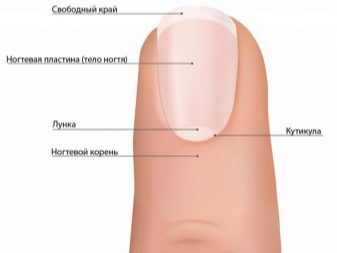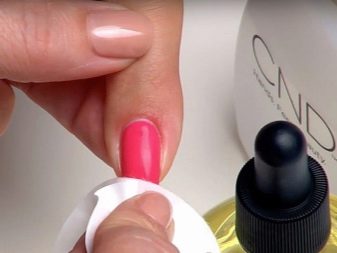Gel nail polishing, done without any technology violations, can please you from 2 to 3 weeks, until the nails grow back and the time comes for their renewal. Failure to comply with the technology, accordingly, shortens the term for wearing a manicure to several days. As a specialist in nail service, and someone who independently, at home, is engaged in nail painting, you need to know all the details of the procedure, otherwise the result will bring a feeling of disappointment. Correctly sealing the end (arch) of the nail with gel varnish is one of the points leading to long-term wearing of the varnish.

What it is?
The end face is a cut of the free edge of the nail plate. Due to the fact that more than one layer of manicure is applied, an unsealed arch simply makes all layers of gel polish available. Uncoated gel layers are much easier to chip than protected ones. The sealing of the arch is the coloring of the free end of the nail from 2 sides, first with a base, then with gel varnish, and at the end with a finish. In other words, this is not one final process, but a set of operations at each stage.
If you look from an aesthetic point of view, the unfinished section looks extremely unsightly and is striking. The advantage of sealing the arch of the nail plates is the disappearance of a yellowish tint, the plates are less stratified, chips are less likely to appear on them. Healthy nails allow you to make manicures more often, unlike those that have already undergone the stages of separation, and become weak.


How to correctly seal the arch?
Consider the sealing technique step by step, since the process itself consists of a number of important steps.
Preparing hands
No matter how trivial it may sound, but before you start the procedure, you need to do the preparation of the hands: wash them thoroughly, make a bath or apply a nourishing mask, soak in oil. If you intend to make changes to the geometry of the nail plate, then do this before gel polishing.


Remember that immediately after the completion of water activities, it is impossible to apply varnish under any circumstances. The nails soften, acquire porosity, and are not able to maintain a tight fit of the gel to the surface. Wait at least thirty minutes. During this period of time, you can push and cut the cuticle or give the nails the desired configuration.
Nail Plate Processing
Before applying gel polish, it is not necessary to file nails with buff. This must be done only if the nails are too much stratified. In other situations, treat the nails with a soft file and cover with a degreasing agent. For grinding, it is preferable to use a lint-free cloth. Pay close attention to the edge of the nail, since the peeling of the gel begins with it. You can no longer touch the plates of nails subjected to buff treatment with your hands. At the end of this step, the nails are treated with a degreaser.


Primer use
To prevent brittle and brittle nails, you can apply a primer (primer) to them. The product dries instantly, and guarantees the best adhesion of the following layers to the nail plate.
The primer allows you to degrease, dry and disinfect the nail plate. It is allowed to practice both acid-free and acidic matter based on the type of plate.


Apply the primer carefully so that it does not under any circumstances appear on the cuticle and skin near the nail.
Gel Polish Base
Upon completion of all the above activities, it is necessary to begin to lay the foundation. This colorless viscous substance allows not only to make the coating more durable, but also protects the nails from weakening and yellowing. Select a base with biologically active substances included in the composition or with caring components.
The base thickness should be extremely small. Dry the base in a specialized lamp. The sticky layer will certainly be removed. The base counteracts the invasion of the colored enzyme into the nail plate. It is best to try to enter the base coat slightly under the protruding edge of the nail. When the nails are trimmed excessively short, and their size is not enough to seal, it means you need to either grow the nails or simply not rely on the impeccable quality of the manicure.


Gel end sealing
This procedure includes the following steps.
- Lay a thin layer of the base coat.
- Take a brush and dip it in an ordinary gel. Remove excess fluid and carefully brush the edge of the nail plate, holding the brush in a perpendicular position, with a hair bundle to the tip of the finger. This will make it possible to prevent peeling of the manicure from the nail plate.
- Dry the basecoat in the LED or UF lamp for 2 minutes.
- Apply a layer of gel polish. If the liquid is thick, then one layer is enough, if the density is not enough, more coatings will be needed. Dry each in a lamp.
- Apply a top and dry it.
- Using a lint-free cloth, remove the sticky layer.




Finish gel
Upon completion of the application and drying of the gel polish, you should cover the nails with a finishing agent. The finish layer should be slightly higher than the thickness of the base coat. The gloss of nails directly depends on the quality of drying the finish. Specialists in the processing of nails say that it is better to let it be over-dried than under-dried. When the coating is not dry, then, together with the removal of the gel residues, the gloss will disappear.


The subtleties of care
After acquiring the nails of a beautiful shape and graceful appearance, it is very important to worry about them, so that there is no stratification. For this, you need to adhere to several recommendations.
- The use of hot water should be limited during the first day after the completion of the procedure. You should also not visit the beach or the solarium.
- It is forbidden to file nail plates. If any unpredictable factors appear, it is necessary to completely remove the gel coating and perform all operations again.
- Gloves are required in case of interaction with detergents, soil, chemical fertilizers. This will eliminate the contamination of the nail plates, in addition, protect sensitive skin of the hands.
- It is recommended to choose the time when you should walk without varnish. It will be useful to rub oils, baths with paraffin. With this, the nail plates will become strong, and then nothing will remind them of their fragility and delamination.




Useful Tips
Let us dwell on some tips provided by nail service professionals.
- Carefully wipe the brush and paint over the arch without pressure, so as not to break your head, why the varnish drains onto the inside of the nail or swims up with an unsightly “roller”.
- Hold the brush only perpendicular to the nail plate, and do the sealing movement from the left to the right or from the right to the left, but not from the bottom up, or from top to bottom.
- To protect the skin tissue under the nails from getting varnish, apply a liquid tape.


In conclusion, it can be noted that if you strictly adhere to the technology, understand how to seal the end of the nail plate with gel varnish, and prevent the coating from wearing out as a result of mechanical stresses, it will please you for a long time.
For how to seal the end of the nail with gel polish, see the next video.










